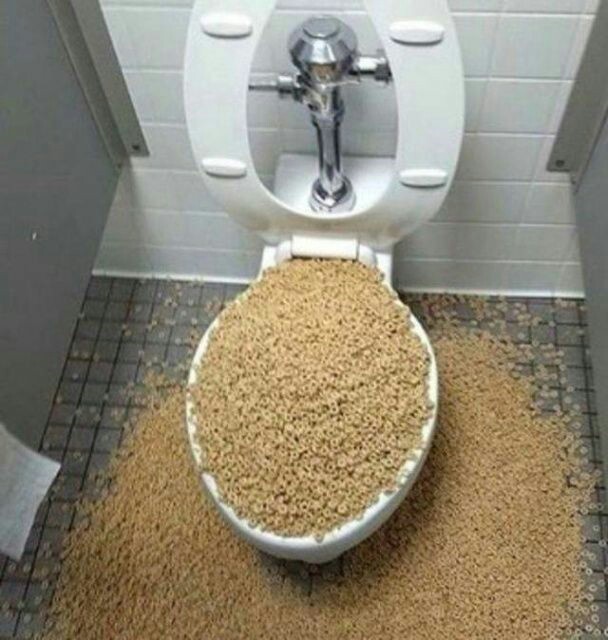Is it Suitable to Dispose of Food Down the Toilet?
Is it Suitable to Dispose of Food Down the Toilet?
Blog Article
What're your beliefs on Flushing Food Down the Toilet??

Intro
Many individuals are often faced with the dilemma of what to do with food waste, especially when it comes to leftovers or scraps. One common inquiry that develops is whether it's okay to flush food down the bathroom. In this article, we'll explore the reasons that people may consider purging food, the consequences of doing so, and alternative techniques for correct disposal.
Reasons why people might consider purging food
Lack of recognition
Some individuals might not recognize the prospective damage caused by flushing food down the bathroom. They might mistakenly think that it's a safe method.
Ease
Flushing food down the commode may look like a fast and very easy service to throwing away unwanted scraps, particularly when there's no neighboring garbage can available.
Negligence
In many cases, individuals may just pick to flush food out of sheer negligence, without thinking about the repercussions of their activities.
Consequences of flushing food down the commode
Environmental effect
Food waste that ends up in rivers can contribute to pollution and harm aquatic communities. Additionally, the water used to flush food can strain water resources.
Pipes problems
Flushing food can result in blocked pipelines and drains, causing costly pipes fixings and troubles.
Types of food that need to not be purged
Fibrous foods
Foods with fibrous textures such as celery or corn husks can obtain tangled in pipelines and trigger obstructions.
Starchy foods
Starchy foods like pasta and rice can soak up water and swell, leading to blockages in pipelines.
Oils and fats
Greasy foods like bacon or food preparation oils should never be purged down the commode as they can solidify and create blockages.
Correct disposal methods for food waste
Making use of a garbage disposal
For homes geared up with garbage disposals, food scraps can be ground up and purged via the pipes system. However, not all foods appropriate for disposal in this fashion.
Recycling
Certain food packaging products can be recycled, lowering waste and minimizing environmental effect.
Composting
Composting is an environment-friendly method to get rid of food waste. Organic products can be composted and made use of to improve soil for horticulture.
The significance of correct waste monitoring
Decreasing environmental damage
Proper waste monitoring practices, such as composting and recycling, assistance minimize air pollution and protect natural deposits for future generations.
Protecting plumbing systems
By staying clear of the method of flushing food down the bathroom, home owners can prevent expensive pipes repairs and preserve the honesty of their pipes systems.
Conclusion
In conclusion, while it may be tempting to purge food down the bathroom for convenience, it is essential to recognize the potential repercussions of this activity. By adopting appropriate waste management methods and dealing with food waste properly, individuals can contribute to much healthier plumbing systems and a cleaner atmosphere for all.
THINK TWICE BEFORE FLUSHING FOOD DOWN YOUR TOILET IN FALLBROOK CA
Let’s be honest, we’re really supposed to be tossing rotten or leftover food in the compost bin or trash can. But many people like to place scraps of food down the drain of, say, their kitchen sink. That’s why the garbage disposal was invented: so we can continue to place certain foods down the drain without clogging our drain in the process. Smart.
But not all of us have the luxury of having a garbage disposal installed. So, you might continue to shove food down your sink drain anyway – or worse: you might flush them down your toilet! If you’re guilty of doing the latter, you’re going to want to stop, and here’s why:
Toilet Drains Aren’t Designed to Handle Food!
There’s your answer: food just doesn’t belong in your toilet. It may seem like your toilet drain is wider than the drains of your sinks, but truth be told, that isn’t actually the case. The narrower pipes of your toilet leave your plumbing at risk for clogging if you do happen to flush your food. In addition, food doesn’t break down as quickly that toilet paper and human waste do. In turn, this leaves your toilet at risk for a nasty clog.
Although a flush of a tiny pinch of food every now and then isn’t going to completely damage your toilet, there are certain foods that should absolutely not be flushed in your toilet at all. These include starchy foods like mashed potatoes, grains, hard pieces of food that are slow to break down, and fats and oils.
The latter categories of food are particularly problematic as they may harden, expand as they absorb water, break down slowly in your system, or generally create the perfect obstruction with their gelatinous composition. These are all things you don’t want in your plumbing system!
Experiencing a Toilet Clog?
Nobody’s perfect, and we all make mistakes. Sometimes one of the mistakes people make is flushing food down their toilet and later realizing that it wasn’t the best thing to do once they see that their toilet is now clogged. Uh-oh!

I stumbled upon that blog posting on Think Twice Before Flushing Food Down Your Toilet while doing a search on the internet. Enjoyed our blog posting? Please share it. Let other people discover it. Many thanks for your time. Revisit us soon.
Schedule A Service Report this page